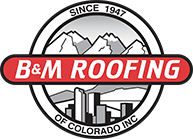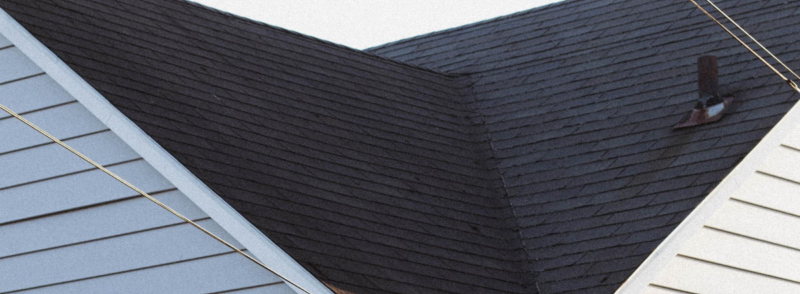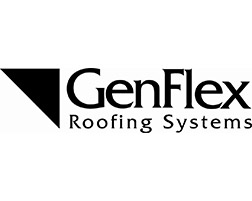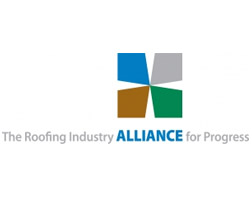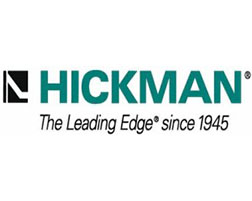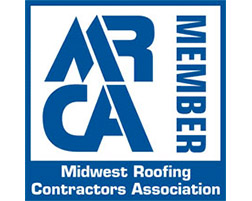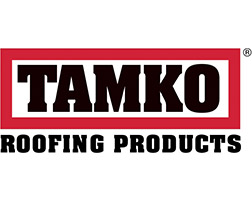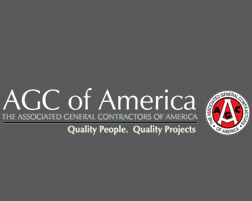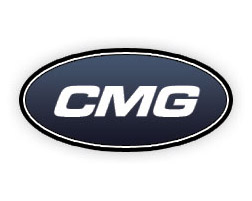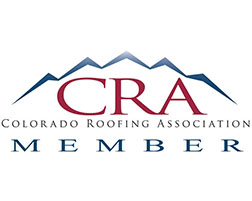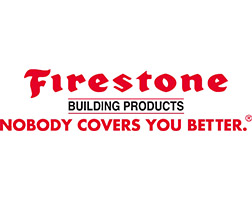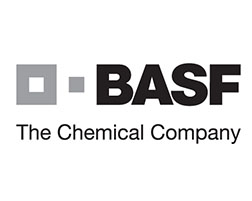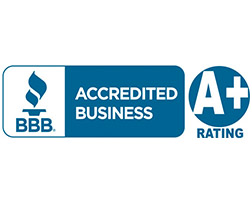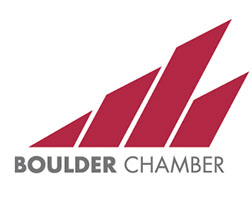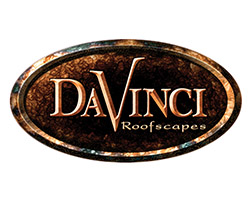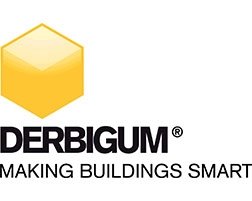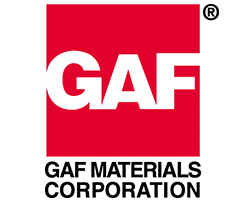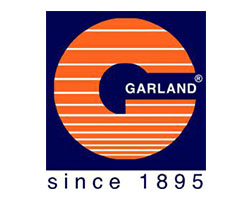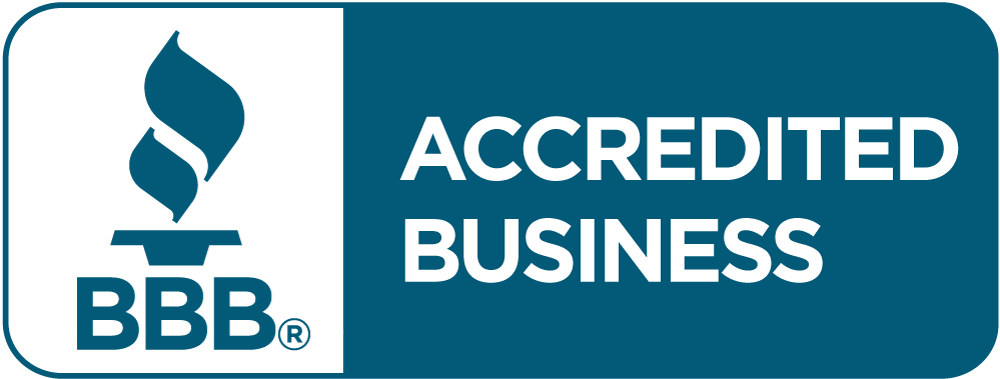30 Year Roof Shingles
Today, you can find roof shingles that are designed to last for specific periods of time. Periods of time such as 15 years, 20 years, and 30 years, among others. Right now, 30-year roof shingles are quite popular due to costing less than longer-lasting roof shingles, while also lasting a fairly long time, being made of strong materials, and being able to withstand Colorado’s intense weather.
What Are 30-Year Roof Shingles?
In today’s roofing market, there are many different roof shingles that you can purchase. Most of these roof shingles are designed to last for a very specific period of time. You can easily find roof shingles that are designed to last for 15 years, 20 years, and 30 years, among other shingles that last even longer lengths of time. Each one of these roof shingles is designed a little differently, due to the materials that they use, their length, and the durability that they offer.
It is no secret that a new roof – or even just roof maintenance and repairs – are relatively expensive. It is also no secret that due to Colorado’s frequent bouts of intense weather, roof repairs and replacements are not uncommon.
Right now, there is a wide variety of different roof shingles that you can purchase. Most of these roof shingles are designed to last for a specific period of time. Each one of these roof shingles is designed to last for the exact amount of time that they advertise, and to do this, they are often thicker than shingles designed to last for less time and they are also made of slightly different materials.
Just as the name implies, then, they are ones that are designed to last for 30-years. Since they are designed to last for 30-years, they are thicker and stronger than other roof shingles. This not only allows the roof shingles to last longer, but it also makes common forms of weather damage – snow and ice roof damage is quite common in Colorado – which, of course, allows your roof to last for longer while reducing the need for repairs.
- Roof maintenance and repairs aren’t always cheap
- Colorado experiences frequent bouts of intense weather, leading to the necessity for roof repairs and replacements
- There are a wide variety of different roof shingles that can be purchased, these roof shingles are often designed to last for specific periods of time
- Some of the most popular roof shingles are 30-year roof shingles
- They are durable – designed to last for 30 years; they are thicker and stronger than other roof shingles, allowing them to last longer and to protect roofs against Colorado’s intense weather
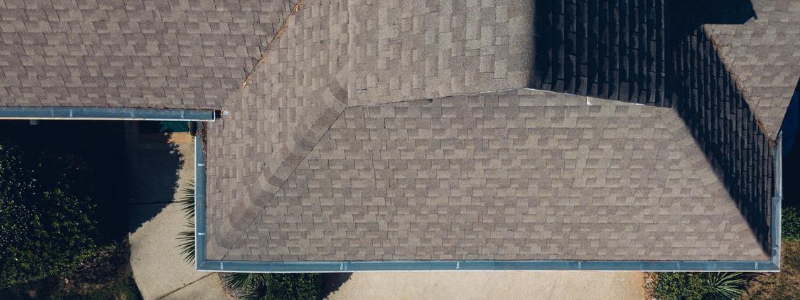
What Sets Them Apart From Other Shingles?
If you compare them to, for example, 15-year roof shingles, you will notice a few differences. None of these differences is particularly large, or even that noticeable, but they transform the durability and stability of your roof. Because of this, 30-year roof shingles are stronger and sturdier than 15-year roof shingles.
The most notable quality that sets 30-year roof shingles apart from roof shingles that have been designed to last for shorter periods of time is their thickness. If you look at 15-year shingles, you will find that most of them are relatively thin with few layers. Most of them are strong enough to handle intense weather, and they can last for 15-years, but they aren’t thick enough to protect against especially intense weather or to last for much longer than 15-years. But, 30-year roof shingles can be twice the size of 15-year roof shingles due to their enhanced thickness.
To ensure that each layer is connected to one another in a sturdy manner, 30-year roof shingles use better adhesive and lots of it. Most 15-year roof shingles use good adhesive, as well, but they often use less of it and the durability of the adhesive is often not to the standard of a 30-year roof shingle.
For roof shingles to be sturdy and durable, they must use strong materials. More often than not, 30-year roof shingles use the same basic materials that 15-year roof shingles use. These are materials such as wood, asphalt, and slate; among various others. But, most 15-year roof shingles use recycled materials, whereas 30-year roof shingles use new materials. That way, the shingles that comprise the roof are stronger and sturdier. Plus, there is less filler within the shingle.
The last difference that must be considered is the price. Just as you would expect, 30-year roof shingles are more expensive than 15-year roof shingles. Much of this is due to the materials that comprise the shingles as well as their thickness and density. These factors lead to roofing shingles that cost more money, yet last longer than 15-year roof shingles and, generally speaking, serve as a great investment.
- The main difference that sets these apart from other roof shingles is the thickness
- They are much thicker than 15-year roof shingles, among others, and that’s because they have more roofing layers
- More adhesive is used than other roof shingles; that way, each layer of shingle is connected to one another
- 30-year roof shingles often use the same materials that other roof shingles use, but they use less recycled material and there’s less filler in each shingle
- The price of 30-year roof shingles is more than that of a 15-year roof shingle, due to the density and material
Are 30-Year Roof Shingles Right For You?
A roof is an investment, and this is especially true of the shingles that comprise the roof. If you do not wish to spend a lot of money and have no need for an especially-strong or long-lasting roof, then this type of shingles may not be very useful to you. If you would like your roof to last for many years, and you would like to minimize the need for roof repairs, then they may just be right for you.
A good roof is a significant investment. But, the dividends that this investment can pay off are often more than worth the initial costs.
When you invest in them, you get roof shingles that are strong, sturdy, and long-lasting. By doing this, you ensure that your roof will last for a long time, with minimal issues, and that the interior of your home is protected.
For many people, this makes 30-year roof shingles a great investment. But, they can be expensive, and if you are uncertain as to whether or not you will move, then they may not be a great choice because they affect very little of your home’s resale value.
The best way to determine whether or not 30-year roof shingles are right for you is to concern your needs and wants, as well as your budget.
Here, at B&M Roofing, we can help you ask and answer those questions. Then, when you’re ready for the new roof, we can help you build and install it!
Creased Shingles
In the state of Colorado, intense wind and heavy snow is a very common occurrence. Many Coloradans are equipped to handle drastic weather changes, but homes and businesses can sustain damage during hail, rain, or snow storms. These drastic weather patterns can cause costly repairs, including commercial and residential roof deterioration. Even small tears and bends can lead to leaks and once a leak has set in, it can cascade. In some instances, roof damage may not be extensive or even noticeable. However, for this reason, it’s important to get your roof regularly inspected. An experienced Colorado roof will be able to check for common signs of water stains, curling, and creased shingles. Creased shingles are a threat to the stability and durability of any roof. But, fortunately, they’re easy to spot and, with the help of B&M Roofing, easy to fix.
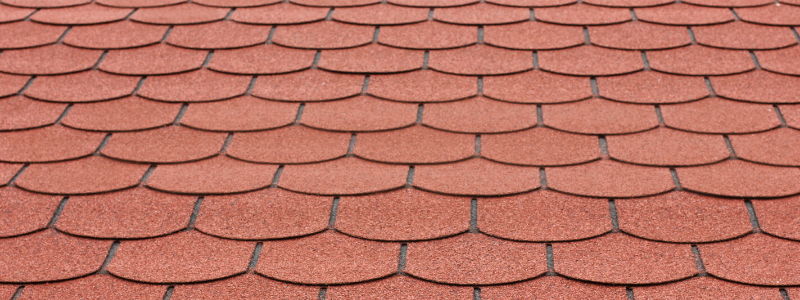
What Are Creased Shingles?
As the name implies, creased shingles are bends in asphalt shingle roofing material. More often than not, creases are one of the most visible signs of roofing deterioration. A damaged shingle, when inspected closely, will provide roofers information helpful to a Colorado roofing inspection or evaluation. Creasing usually occurs in intense wind storms. If the wind finds leverage within the roofing material, it can push shingles up and back down until it forms what is known as a crease. If this process happens repeatedly, a shingle may tear off completely, leaving the material beneath exposed and also vulnerable.
More often than not, the crease on the shingle will begin on one side of the shingle—the right or left—but won’t reach the other side of the shingle. The creasing itself will, most likely, take the form of a faint and slightly-jagged line. Some creased shingles, though, have far more apparent creases that are larger and a bit darker.
Who Do Creased Shingles Happen?
When the wind is moving at an intense speed, it isn’t uncommon for the shingles on a roof to become loose. If the wind is especially intense, it can cause the shingles on the roof to lift up and flap in the wind. As this takes place, there are two things that can happen. One of which is that the wind, due to its intensity, pushes the shingle upwards and creates a very visible crease in the asphalt material. The other is that the loose shingle pushes up against another shingle, and by pushing up against the shingle a crease is formed on more than one.
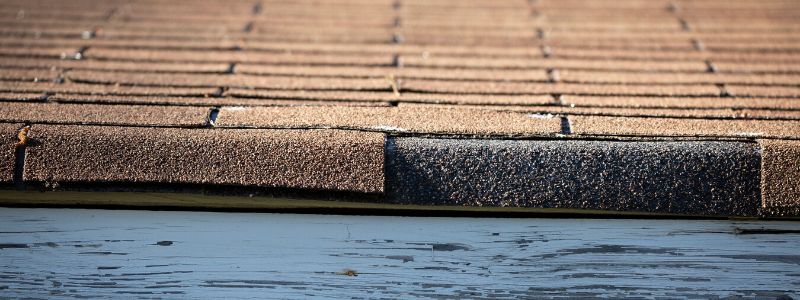
That said, there are other reasons creased shingles are an indication that something “more” might be happening with your commercial or home roof. While high winds are often the culprit of creased shingles, there are instances where other roofing elements might be impacting the health of a roof. As a whole, roofing systems—including the frame, underlayment, sealant, and ventilation systems—should be working together to keep a roof strong and intact. Creased shingles can also happen for the following reasons:
- A sealant is becoming unsealed due to age, product defect, or poor installation.
- Installing shingles late in the year, which prevents the sealant from softening in the warm sun and, thus, it cannot perform as a reliable adhesive.
- The sealant had dirt on it prior to the shingles being installed.
- High overdrive, underdrive, angled, or mislocated placement of a nail.
It’s important to work with an experienced Colorado roofing company that can provide roof installations that are meant to extend the lifetime of your roof.
Wind Can Damage a Residential Roof
Due to Colorado’s intense climate, intense winds are far from an uncommon experience. When there are intense winds, it isn’t uncommon for roof shingles to be lifted from off of the roof, while still attached, and to begin flapping in the wind.
If a roof shingle isn’t bonded to the roof correctly—or, alternatively, if the adhesive has broken down—the wind can move into the open spaces underneath the shingle. When wind moves into these open spaces, it can push the roof shingle upwards, leading to the aforementioned “flapping in the wind”. Flapping roof shingles may begin to bend. A crease can easily form when shingles are bending into unnatural positions or angles. Sometimes, though, the roof shingle doesn’t bend at an unnatural angle. Instead, it pushes up against the roof shingle that is directly below or above it. If it pushes up against this roof shingle with force, then this can cause two creases to be formed on two different roof shingles.

Why Are Creased Shingles Bad?
When your roof has a creased shingle, that means two things. One, it means that there is a pocket of space underneath the shingle that is open, which is how the air got underneath it and lifted the shingle up. Two, it means that your shingle is missing granules, due to the crease. Both of these are quite bad because they directly affect the stability of your roof and its ability to protect the interior of your property.
For a shingle to become creased, it must be lifted off of the roof. But, for this to happen, a strong wind must be able to go underneath the shingle. If there is a pocket of open space underneath the shingle, then a strong wind will be able to do this, causing the shingle to lift up.
When there is a pocket of open space underneath the shingle, it means that the shingle isn’t fully protecting the interior of your property. Things like rain, ice, and wind can flow into your property. If this isn’t taken care of, it can lead to some very significant damages.
As a shingle becomes creased – whether by being bent at an unnatural angle or pushing across another shingle – it loses granules. Granules from the entirety of shingle, and they protect the shingle from the sunlight. If there are fewer granules on the shingle, then that means that the shingle itself will begin to deteriorate, becoming far less effective at keeping the interior of your property safe.
What Is The Best Way To Fix Creased Shingles?
Creased shingles must be replaced and resealed before more damage can occur. Missing granules lessen the stability and safety of an asphalt shingles roofing system and, in turn, your roof and the interior of your property. Missing granules may also allow sunlight to shine down onto the shingle, and this can easily cause the shingle to rot and decay. If this happens, then rain, snow, and wind— and all elements that Colorado experiences frequently—can break through the shingle and wreak havoc on your home. This is something to avoid as it’s both costly and destructive to the inside and outside of the property.
While noticing creased shingles usually isn’t too difficult, replacing those shingles and applying the proper adhesive to them can be difficult. That’s why, at B&M Roofing, we offer services that are dedicated to locating the creased shingles on your roof and replacing them in the most affordable and effective manner possible! If you think you’re experiencing creased shingles on your Colorado roof, give us a call today at (303) 443-5843.
Metal Roof vs. Asphalt Shingles
Weighing the pros and cons of a new roof is an important first step for residential homeowners. Purchasing a new roof is an investment, and a hefty one at that, so it’s important to complete your due diligence prior to hiring a reliable roofing contractor. One of the first items of business is understanding the different components of a roof and how they work together. The material will play a crucial role in price and lifespan. Two of the most popular styles of roofs are metal and shingles. So let’s take a closer look at metal roof vs asphalt shingles.
Looking for new residential roofing services? B&M Roofing offers experts and quality roofs for homeowners throughout Colorado. It can be an overwhelming process, so be sure to check out our blog breaking down all of the roofing basics.
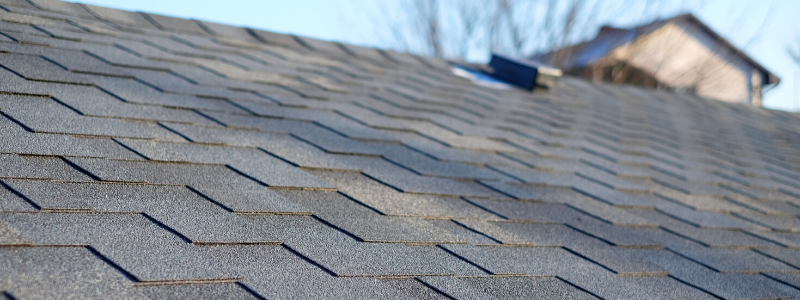
Installing a New Roof
If it’s time for a new roof, note that it may take some time to research and determine the best path forward. One of the most overwhelming aspects of homeownership is the ongoing costs of maintenance and upkeep. However, making the right moves can help save a ton of money in the long run. For example, selecting quality workmanship for a new roof can make a world of difference to the lifespan of the end product, therefore, cutting costs for repairs and new replacements later down the road.
Be sure to carefully select a roofing contractor, as all are not created equal. Here are some tips you should consider before hiring a Colorado roofing contractor. Aside from this, it’s also important to determine your home needs.
Selecting Materials
One of the most important items of business when selecting a new roof is the materials that will be used. On one hand, most homeowners have a preference for materials due to their aesthetics and outward appearance. However, more important items should also be taken into account such as:
- Roof Structure
- Product cost
- Material weight
- Installation Requirements
- Environment/Weather factors
You may notice that different regions of the US feature various styles of roofing. Considering the weather patterns is a huge determining factor. Some roofing materials are more durable than others under certain circumstances. Colorado, in particular, is prone to heavy snow, rain, and even hail. For this reason, metal roofs can be considered a more ideal material to use. However, there are pros and cons to every type of material. Are asphalt shingles a close secondary option?
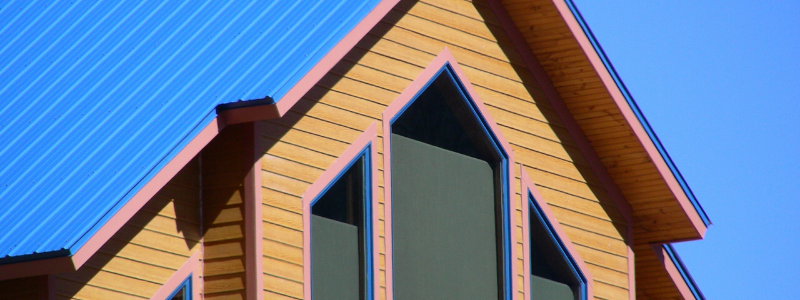
Metal Roof vs Asphalt Shingles
Consider the various pros and cons of a metal roof vs. asphalt shingles. Determine needs for your home, weather patterns, and upkeep. Also, figure out the best look for your home as it will be an enjoyment for years to come. In all, roofing materials should come backed with a manufacture warranty, and you should only consider working with Colorado roofers that offer workmanship warranties, as well.
Asphalt Shingles
Asphalt shingles have a variety of benefits, especially in consideration of their application and variety of looks. In fact, newer asphalt shingles can be made to look more like tile, wood shake, and slate, which gives homeowners more of a variety to select from. Asphalt shingles are the most common material used in the United States for roofs, likely due to their low cost and durability. They’re also easier to install than other selections.
Pros
Quick to install, economically affordable, comes in a variety of colors/styles
Cons
Shorter lifespan, quality varies
Metal Roof
One of the most durable materials to choose for your home roof is metal. Fortunately, metal combats the most drastic weather conditions and is suitable for colder climates like that in Colorado. Additionally, metal roofs can come in various colors to match your home style. However, the downside is that metal roofs are difficult to install and can be very expensive. For hail prone Colorado, though, most homeowners select this material as their preferred option.
Pros
Durable, long lifespan, reliable, comes in a variety of colors
Cons
Expensive, difficult to install, short-term future may not be worth the investment.
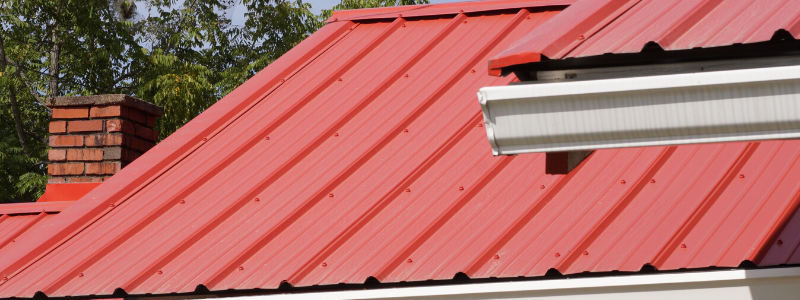
Metal roof over shingles
Metal roofs are far more durable than almost any other option, withstanding much of Colorado’s extreme weather. These roofs have been known to last 50-60 years (and sometimes even longer) without any issues. That durability costs homeowners upfront: In most cases, metal roofing can cost two to four times as much as traditional shingles per square foot, though that number can be much higher if you opt for high-end copper or zinc roofing.
Choosing between shingles or a metal roof ultimately comes down to how much you’re willing to invest and how long you plan on staying in your home. If you plan to stick around for a while, a metal roof is well worth your investment, but if you have plans to sell in the short-term future, going with asphalt shingles is a safe and wise decision that remains popular for good reason.
Final Decision: Metal Roof vs. Asphalt Shingles
The final decision is ultimately up to the homeowner. Discuss quality and workmanship with your roofing contractor and obtain free estimates for your upcoming project. Be sure to do research upfront to get a full scope of needs/requirements for your home in addition to obtaining critical information for upkeep and maintenance.
B&M Roofing offers a wide variety of styles and options for residential roofing. Give us a call today for a free estimate at (303) 443-5843.
10 Roof Maintenance Tips for Fall
As we roll into autumn, the clear skies of summer are waning and thunderstorms and snow will be making their way to Colorado. Roof maintenance is often neglected during this time of year, but seemingly small problems can turn into costly repairs down the line. Taking the time to inspect your roof now will save you some cash and a headache in the future.
Here are our top 10 roof maintenance tips for fall.
- 1. Look out for leaks
- If you see signs of leaking, mold, or dampness in your attic, call a professional ASAP. Catching a leak early will only cost you a few bucks to fix, but the worse it gets, the more expensive it will be to repair.
- 2. Get rid of debris
- Excess debris can damage shingles, allow algae to grow and clog your gutters. To prevent this, make sure to sweep off sticks and leaves from your roof whenever you’re cleaning your gutters.
- 3. Don’t let the snow pile up
- Colorado has been known to see it’s first snow as early as October. When the first snowstorm hits, take a shovel or rake and gently pull snow off the roof to avoid it from collapsing.
- 4. Manage the moss
- Routinely checking for signs of fungus and algae. Fungus and algae create moss, which can retain moisture and freeze, causing damage to your shingles. If you do happen to find moss, invest in some zinc or lead control strips to get rid of it.
- 5. Trim the trees
- Long branches can scratch or even remove roofing materials. Removing branches that are getting close to your roof can save you a ton in the long-run.
- 6. Inspect your shingles
- After hailstorms, make sure to check for curling or loose shingles and for damaged flashing. These things can get worse over time, so catching them early will help your roof last as long as possible
- 7. Never power wash
- When you see fungus or debris on the roof, you may get the urge to power wash it all off. Don’t do that. Power washing can push water under your shingles and weaken the roof’s structure. Carefully removing debris and fungus with a broom or rake is the best way to go.
- 8. Clean your gutters
- Fall is one of the worst times of the year for your gutters. The leaves will fall from your trees and accumulate in your gutters, leading to clogs. Cleaning these leaves out will prevent damage by allowing rain to drain properly off your roof.
- 9. Watch for pests
- Termites, rats, squirrels, and other pests can cause serious damage to your roof. If you see signs of small animals or pests try to remove them immediately.
- 10. Install insulation
- Insulation not only keeps your house warm during the cold months of fall, but it can also prevent your roof from warping. It prevents snow from refreezing and causing water damage to your roof. If you don’t already have attic insulation, invest in some as soon as possible.
Consider these maintenance tips to save time and money on your roof this fall. Contact us with any questions you have!
Tar and Gravel Roofs: What You Need to Know
Tar and gravel roofs are composed of laminated layers of asphalt based sheets, hot tar, and roofing felt. The topmost layer is lined with light-color gravel which protects the layers against sun damage and reflects some of the sun’s light. If you have a home or business with a flat roof – a tar and gravel roof may be the way to go. Here are some things to consider before deciding if this is the right roofing option for you.
Advantages
Of all the flat roofing options, a tar and gravel roof is the most budget-friendly and can have a lifespan of up to 30 years with regular maintenance and repair. It provides excellent protection against UV rays, it is energy efficient and is a great option for windows and decks that overlook the roof. Gravel is also an excellent fire retardant and the surfaces on the gravel scatter light instead of absorbing it which can help keep your roof cooler in the summer. A tar and gravel roof has a great return on investment because it is inexpensive and lasts a long time. In addition, required repairs are less frequent because of the strength of the materials.
Disadvantages
A tar and gravel roof is very heavy and you may need to strengthen the supports for your roof before application. Strong sun exposure can damage the roofing membrane if it is left uncovered by the gravel and it is not typically recommended in places that get a lot of snow or rain. Occasionally, tar and gravel roofs are prone to leaks, especially if the underlayments are not correctly installed. Improper installation can lead to significant damage and it is highly recommended to have your tar and gravel roof professionally installed. Flat roofing is also prone to ponding and depressions may occur on the roof which can affect the drainage slope and cause pooling water to continue.
Repair & Maintenance
Roof maintenance is something you need to do in order to protect your home from any sort of damage. A tar and gravel roof needs regular maintenance to extend its lifespan. At least once a year, check the gravel – if the roof surface becomes exposed, it accelerates the deterioration of the roof. Add gravel where necessary. Remove any leaf debris that builds up over time. Since the roof is flat, rain doesn’t wash down leaves that fall on it and this can result in ponding which happens when water stays on the roof surface for more than 48 hours.
It is always recommended for a professional roofer to do any roof maintenance. Not only can they safely maintain your roof, but they can also advise you on the health and lifespan of your roof.
If you are considering a tar and gravel roof, contact your local roofing expert for more details. At B&M Roofing, we bring superior knowledge and experience in commercial and residential roofing. We are happy to work with you to understand what type of roofing is right for your home or business and your budgetary needs. Contact us today for a free estimate!
Tips for Hanging Holiday Lights
Hanging holiday lights is one of our favorite traditions around this time of year, but creating a light display can be time consuming and difficult. That’s why B&M Roofing has put together a list of the best tips and tricks to make your lights the best ones on the block!
Plan in advance
Having a design plan in mind will save you tons of time when hanging your lights. Map out the basic pattern of your lights instead of just winging it. Try to plan a time during the day to hang your lights as a safety precaution.
Check your electrical system
Carefully inspect the outlets and plugs you’ll be using for your lights. Call an electrician if you notice any sparks or singeing. Do not use lights with any fraying or exposed wires.
Take caution on the ladder
When hanging your lights, ask someone to steady the ladder. Although it may seem like an easy task, it’s always better to be safe than sorry.
Invest in LED bulbs
LED bulbs are more expensive up front but they last 12 times as long as traditional bulbs, which will save you money in the long-run.
Use the right products
Use extension cords and lights that are specifically for outdoor use to avoid any malfunctions. Invest in some light clips to make hanging a breeze. Just check the light package to find the one that fits best.
Find secure hanging spots
Do not use shingles or tiling to hang lights, they are not made to support a lot of weight. When hanging from wood surfaces, test the durability before trying to hang anything.
Use a timer
Invest in an outdoor timer to save money and conserve energy. You can set your timer to turn your lights on at sundown and to turn off after you go to bed.
Following these easy steps will give you the best light display on the block while keeping you safe in the process.
Walking on Roofing
Is it safe to walk on your home’s roof? The answer is always no. The biggest danger is the obvious physical harm. Most homes do not have access to the roof from the attic, so simply getting on the roof is challenging. The height, steep slope and uneven pathways are just a few ways one wrong step could lead to trouble. Not only does walking on a roof cause harm to yourself, but also to your roof. Understanding the outcome from walking on roofs will save you money and keep you safe.
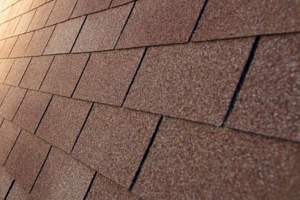 Asphalt Roofing – This type of roofing makes up the majority of residential homes. When wet, asphalt shingles are very slick and easily causes a fall. The small granules of asphalt on the shingles that work as a draining system are easily damaged when walked on. Shoe treads tear away these granules and shorten the lifespan of the roof. Once damaged, the effectiveness decreases and the chance of needing repairs increases.
Asphalt Roofing – This type of roofing makes up the majority of residential homes. When wet, asphalt shingles are very slick and easily causes a fall. The small granules of asphalt on the shingles that work as a draining system are easily damaged when walked on. Shoe treads tear away these granules and shorten the lifespan of the roof. Once damaged, the effectiveness decreases and the chance of needing repairs increases.

Tile Roofing – Each time a tile roof is walked on, the uneven weight causes cracking and loosening which leads leaks and displaced tiles. After noticing a broken tile or debris on your tile roof, do not take matters into your own hands and try to fix the problem. Most homeowners just make matters worse. Tile roofing is delicate and fragile. One misstep leads to more broken shingles or a hurt homeowner.
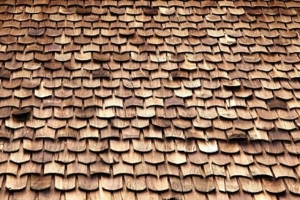 Wood Roofing – Even if wood roofing supports your weight, this type of roofing is notorious for slippery slopes from rainstorms, moss and mildew. If the shingles are badly decayed, they will break as soon as you step foot on the roof. Walking on wood roofing causes splits in the shingles, which will have to be replaced much sooner than expected.
Wood Roofing – Even if wood roofing supports your weight, this type of roofing is notorious for slippery slopes from rainstorms, moss and mildew. If the shingles are badly decayed, they will break as soon as you step foot on the roof. Walking on wood roofing causes splits in the shingles, which will have to be replaced much sooner than expected.
Most problems are unnoticed at the time but lead to small cracks and leaks that eventually cause mold in homes. Leave determining the problems and damage to the professionals. B&M Roofing‘s staff is well-trained and ready to handle your roofing needs – call 303.443.5843 for more information on the services provided.
Shingle Granule Loss – What it Means
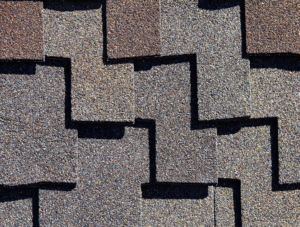 Maybe it’s after a hail storm, or maybe it’s just part of your run-off, but seeing shingle granules accumulate in your rain gutters can be distressing. While it can be cause for concern, shingle granule loss can signal a few different problems with your roof.
Maybe it’s after a hail storm, or maybe it’s just part of your run-off, but seeing shingle granules accumulate in your rain gutters can be distressing. While it can be cause for concern, shingle granule loss can signal a few different problems with your roof.
While your shingles are largely made of asphalt, it’s a material that isn’t particularly resilient to the elements. Because of this, manufacturers extend shingle life by placing mineral granules in a layer on top of the shingle. This layer protects the asphalt below from harmful ultraviolet rays from the sun as well as the general fluctuations in weather.
While it’s a perfectly normal part of roofing’s wear-and-tear to lose some granules over time, your roof shouldn’t be shedding them regularly. If it is, it’s a sign of shingle damage that could be caused by many factors:
- Poor attic ventilation: A poorly vented attic can collect condensation, which causes wood roofing materials to expand and contract more with the elements. This movement can reduce the lifespan of asphalt shingles, causing them to lose granules.
- Foot traffic: Asphalt shingles aren’t deck materials, and aren’t designed to be walked on frequently. Unusual amounts of foot traffic on a roof can dislodge granules, particularly in exteme temperatures.
- Hail damage: Shingle granule loss is often a symptom of weather damage. Shingles battered by hail and wind flex, shift and lose shingles. Granule loss is a classic symptom of hail damage.
- Old age: Your shingles take a lot of abuse. A summer storm can swing their surface temperature from searing in the sun to chilly in the rain. Those temperature fluctuations cause expansion and contractions of the shingles, causing deterioration.
Once you start seeing significant shingle granule loss, it’s only a matter of time before your roof starts leaking, leading to potentially significant damages to your house’s structure. Call B&M Roofing of Colorado for a free estimate at 303.443.6843 or use our Estimate Request Form to get started.
Tips for Safely Hanging Outdoor Christmas Lights

Hanging enough Christmas lights from your roof to blind your neighbors is a favorite holiday tradition for most. Be careful when you’re up on your ladder: One misstep and you changed holiday plans from turkey and dressing to bandages and body casts. Therefore, before recreating Clark Griswold’s 5,000 twinkling lights on your own merry and very bright house, follow these safety tips to hanging outdoor Christmas lights.
- Start With a Plan
Ask yourself these questions before climbing on the roof.
- Do you know how you want your display to look?
- What kind of string lights do you want?
- How many string lights are needed for your design?
The more you can determine safety on the ground, the easier it is to implement on the roof.
- Can you do this?
Before dragging out the ladder, evaluate your health and physical abilities. If you have any type of balance issues or medication that increase risk of bleeding should an injury arise, take a break from climbing ladders this year.
- Survey the Weather
The best time to hang Christmas lights is when it is not wet or cold outside. The more comfortable the weather the better the installation process will go. Climbing a slippery ladder onto your roof can be dangerous and cause the biggest worry this holiday season: falling.
- Check Your Light
Before climbing onto the roof, plug in all lights to check bulbs are working and replace burned out bulbs. Never use damaged or frayed cords for the possibility of damage to other Christmas decorations and electrical fires.
- The Perfect Ladder
Some of the most common roof falls involves a ladder. Make sure your ladder:
- Extents at least 3 feet over the roofline
- Is placed firm and level on the ground
- Supports your weight
- Sets up at a 75 degree angle
- Is away from all doors that could be opened or power line
Properly expecting your ladder before hanging anything from your roof can not only protect your life but your roof’s life as well.
- The Buddy System
When using a ladder, make sure to always have a spotter to hold ladders to prevent tipping. While on the ladder make sure you stay grounded in the center of each ladder rung.
- Hanging Lights
Using plastic clips to hang Christmas lights is the safest and best option. Plastic clips are easy to install and remove from shingles and gutters. Using the traditional nails or staples can puncture your shingles or gutters; even the smallest hole in one shingle can bring moisture to seep in and cause roof damage.
- Finally – Flip the Switch
Your lights are up and ready for the grand showcase! Grab yourself a cup of hot coco and a Christmas cookies for the big reveal – you have earned it.
Drone Photography from B&M Roofing
 When you need a great picture of a roof, you need a drone. Our team’s been hard at work the past year documenting some of our best commercial projects with aerial photography. We’ve gathered a few of our best for the 2017 Drone Photography Contest.
When you need a great picture of a roof, you need a drone. Our team’s been hard at work the past year documenting some of our best commercial projects with aerial photography. We’ve gathered a few of our best for the 2017 Drone Photography Contest.
The contest, which is partially sponsored by National Geographic, lets professional and amateur drone photographers show off their best stuff. While our archives have literally hundreds of bird’s eye snapshots, we pulled together three of our more artistic shots.
Visit our Dronestragr.am profile to view to see our contributions to urban photography. While you’re there, stop and take a look around at some of the other breathtaking shots of this new frontier in photography.
